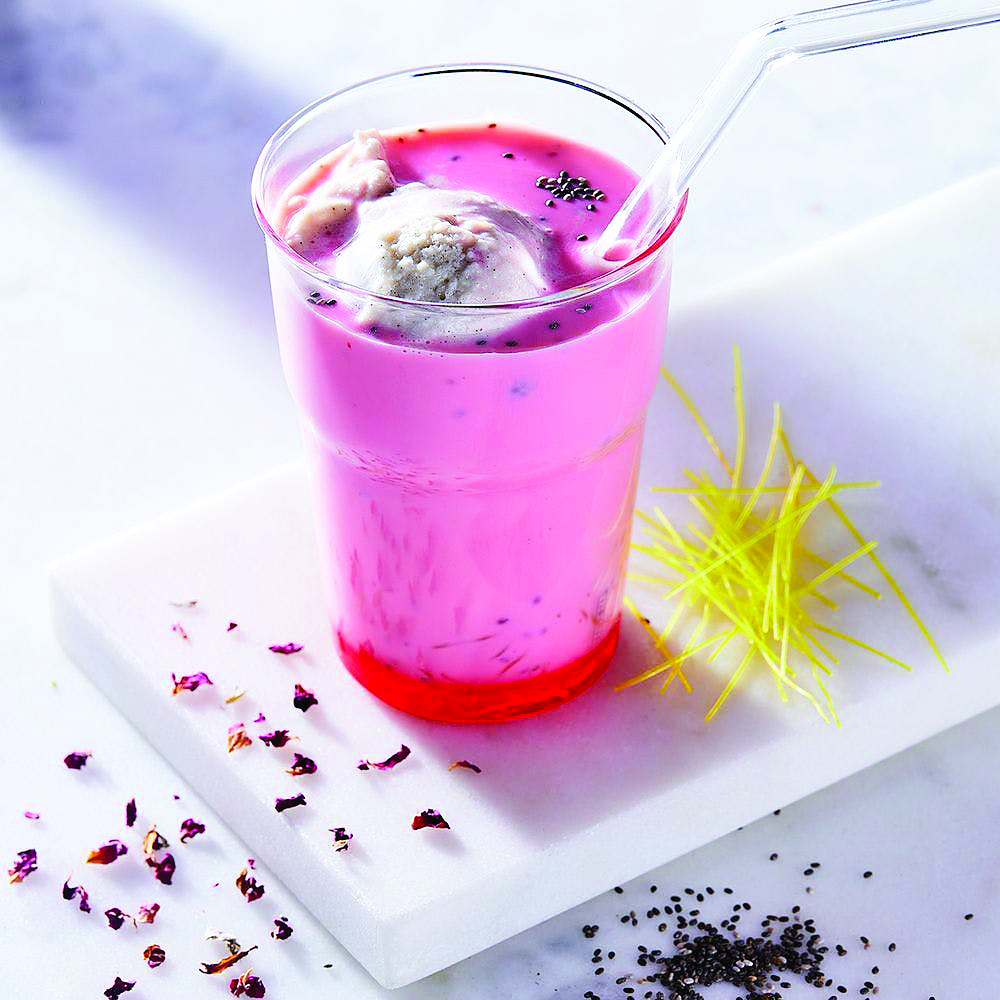
In a world that constantly evolves, where tastes and trends shift like sand dunes in the wind, there are few treasures that stand the test of time. Rooh Afza, the quintessential rose syrup from the heart of South Asia, is one such timeless gem that continues to captivate hearts and tantalize taste buds across generations.
Originating in 1906 in the city of Ghaziabad, India, Rooh Afza was crafted by Hakim Abdul Majeed, a skilled pharmacist with a vision to create a potion that not only refreshed the body but also soothed the soul. Its name, translating to “Soul Reviver,” embodies its essence—a concoction of rose petals, herbs, and fruits blended into a symphony of flavor and aroma.
For decades, Rooh Afza has been more than just a beverage; it’s a cultural icon, deeply ingrained in the tapestry of South Asian heritage. It graces dining tables during festive occasions, offering a cooling respite on scorching summer days and a warm embrace during winter evenings. Its versatility knows no bounds, as it can be enjoyed in myriad ways—mixed with water, milk, yogurt, or even used as a flavoring agent in desserts and cocktails.
What sets Rooh Afza apart is not just its delightful taste but also the nostalgia it evokes. For many, sipping on a glass of Rooh Afza is akin to revisiting cherished memories of childhood—a time when life was simpler, and the world was painted in hues of innocence and joy. Its distinctive rose aroma conjures images of bustling bazaars, vibrant festivals, and family gatherings filled with laughter and love.
In recent years, as the world hurtles towards modernization and globalization, traditional beverages like Rooh Afza have faced the threat of fading into obscurity. Yet, amidst the deluge of trendy drinks and exotic flavors, Rooh Afza remains steadfast, its allure enduring and its charm timeless. The resurgence of interest in Rooh Afza can be attributed to several factors. Firstly, its all-natural ingredients and herbal composition resonate with health-conscious consumers seeking authentic and wholesome beverages. In an age where artificial additives and processed foods dominate the market, Rooh Afza offers a refreshing alternative—a taste of tradition, unadulterated by artificial flavors or preservatives.
Secondly, the growing trend of nostalgia-driven consumption has fueled a renewed appreciation for heritage brands like Rooh Afza. Millennials, in particular, are drawn to products that evoke a sense of nostalgia, reminding them of simpler times and cherished memories. As they seek connection and authenticity in a fast-paced world, Rooh Afza stands as a beacon of familiarity—a taste of home in a bottle.
Moreover, the rise of social media has played a pivotal role in revitalizing Rooh Afza’s presence in the digital age. Through captivating visuals and engaging storytelling, brands have successfully repositioned Rooh Afza as not just a beverage but a lifestyle—a symbol of tradition, culture, and community.
In conclusion, the timeless allure of Rooh Afza lies not just in its exquisite flavor but also in its ability to transcend time and space, bridging generations and cultures with its rich heritage. As we raise our glasses to toast the past, present, and future, let us savor each sip of Rooh Afza—a cherished legacy that continues to thrive in an ever-changing world.















